Syn.: Begonia jatrophifolia Klotzsch, Begonia longipila Lem., Begonia nigrescens Van Houtte ex Otto, Begonia punctata Klotzsch, Begonia radiata Graham, Begonia tanacetifolia Steud., Begonia trigonoptera Sprague, Eupetalum punctatum (Klotzsch) Paxton, Gireoudia heracleifolia (Cham. et Schltdl.) Klotzsch, Gireoudia punctata (Klotzsch) Klotzsch
Family: Begoniaceae C. A. Agardh
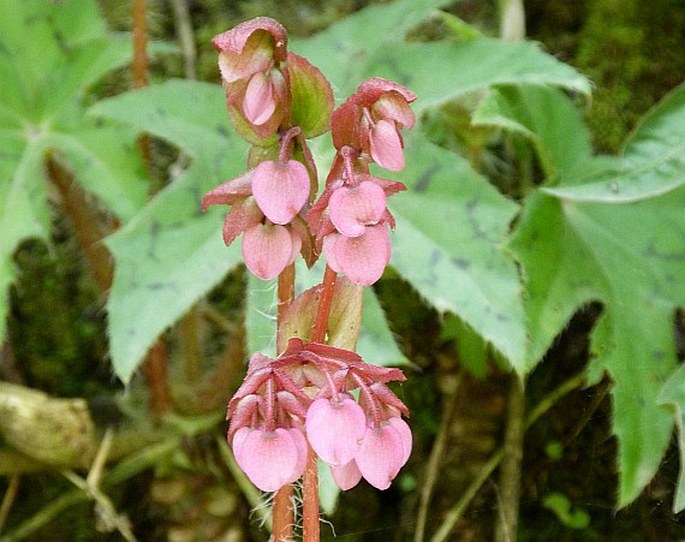
Distribution: Central America – from central Mexico through Belize and Guatemala to Honduras, also in the Panama Canal Zone.
Ecology: It grows terrestrial in tropical forests, at elevations from 50 to 1500 m asl.
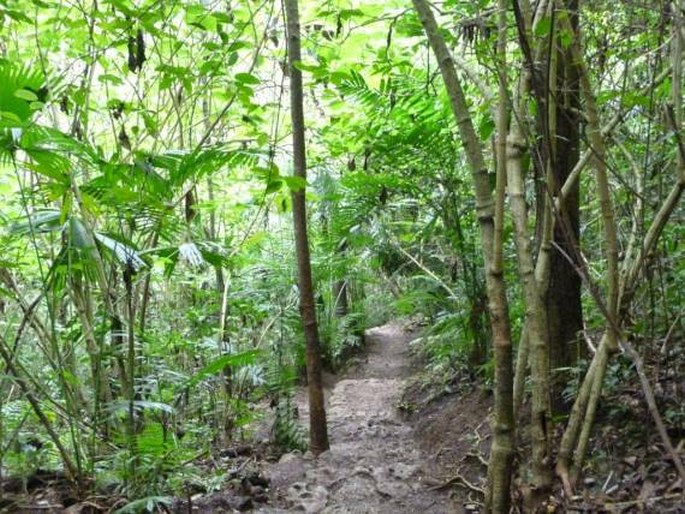
Description: Perennial herb with a repent rhizome, 7–15 cm long, 2 cm thick. Leaves developing with the flowers; stipules triangular, 12–20 mm long, entire; petioles erect, 3–40 cm long, densely hirsute; leaf blades palmately 7-lobed, 1/2 to 2/3 toward base, 8–26 cm wide, dentate with acuminate lobes, nearly glabrous above, hirsute beneath on the nerves and margins, green or with black margins. Peduncles mostly exceeding the leaves, 20–70 cm long, hirsute; inflorescence cymose, strongly unilateral, up to 25 cm long, many-flowered; bracts persistent, broadly ovate or elliptic, entire or serrate, green or red, the lowest 2 cm long; staminate tepals 2, suborbicular, 10–14 mm long, white or rose, pistillate tepals 2, like the staminate. The fruit is a capsule, 8–12 mm long.
Use: The Starleaf Begonia has importance as an ornamental plant, it has been used for many hybrids.
Note: This species is very variable in indument, coloration of leaves, and size of inflorescence.
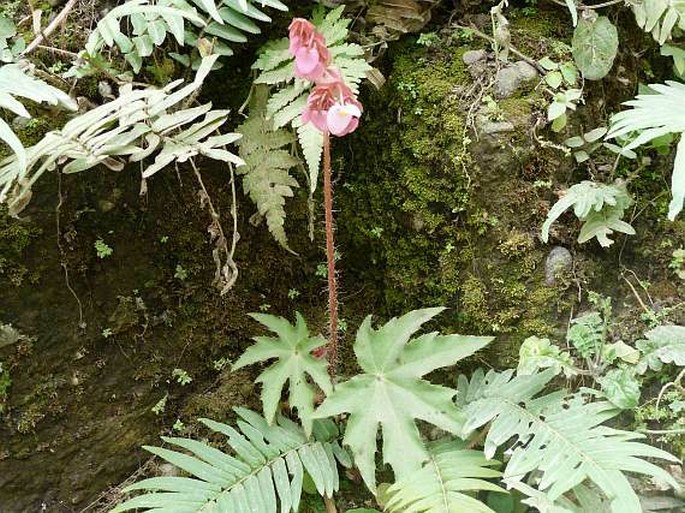
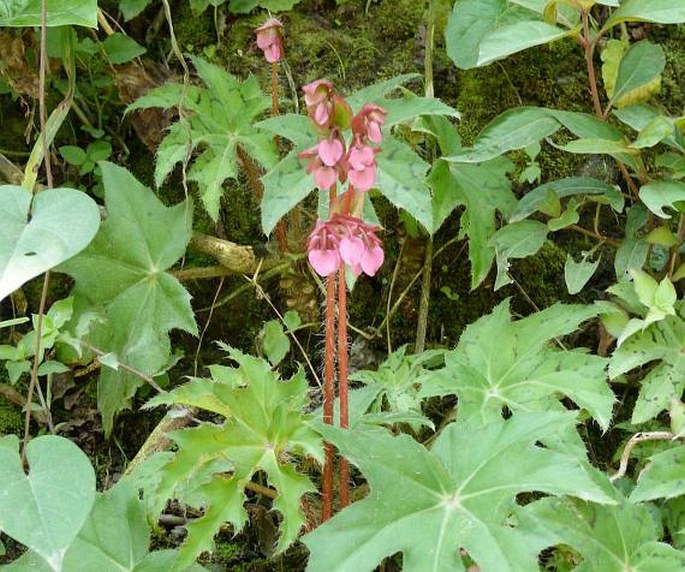
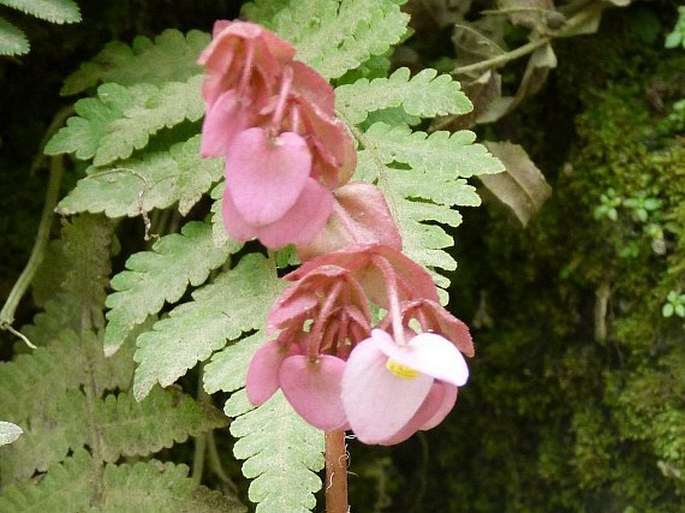
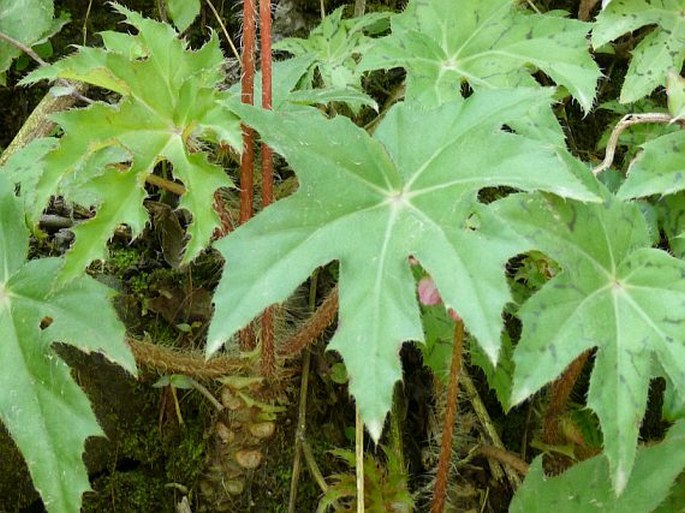
These images were taken in Guatemala, Alta Verapaz, Parque Nacional Grutas de Lanquin (by Jindřiška Vančurová, February 11, 2015).


